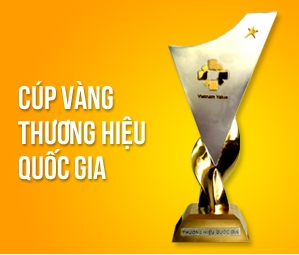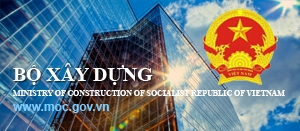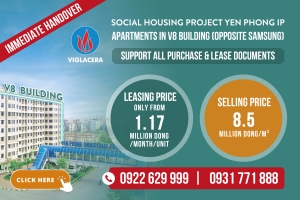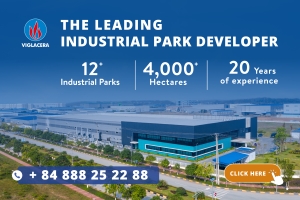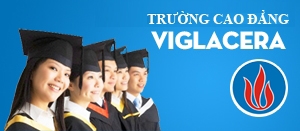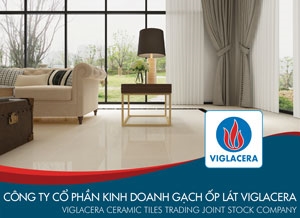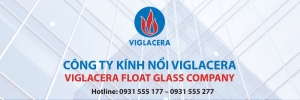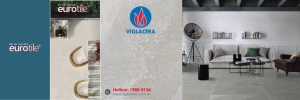VIGLACERA join hands against climate change with the first energy-saving glass product in Vietnam
On June 28th 2016 morning, under the chairmanship of the Ministry of Construction, Newspaper of Construction together with Viglacera Corporation held a Workshop on "Research on development of energy-saving glass in Vietnam" attended by leaders of the Ministry of Construction, leaders of departments and institutes under the Ministry of Construction, architects, investors and clients interested in such new kind of material in Vietnam.
Climate change is currently one of the most critical issues in the world. 195 countries have jointly signed the Paris Agreement at COP 21 at the end of 2015. Accordingly, the countries agreed to limit the global temperature rise below 2ºC during this century, and put efforts to reduce by 1,5ºC in comparison with such period before the industrial revolution. Vietnam is one of countries which is affected by climate change. At the opening session of COP 21, Prime Minister Nguyen Tan Dung made a strong commitment that Vietnam should cope with climate change together with the international community. At the same time, he declared: “Vietnam will contribute $1 million to the Green Climate Fund for 2016- 2020. For greenhouse gas emissions, Vietnam will implement emission reduction compared to baseline of 8% in greenhouse gas emissions by 2030 and up to 25% if received effective support from the international community”.
From Cop21, Vietnam in general and the Ministry of Construction represented by Viglacera in particular has positivly concretized the commitment of the Government. Being the leading manufacturer of building materials (B.M) in Vietnam, Viglacera has always been a pioneer in research and application of modern science and technology in the world to production of all kinds of B.M. To implement the guidelines and policies of the State and the Ministry of Construction to focus on development of high-tech, green and environmentally friendly products as well as bringing economic efficiency, in addition to confirming the first step to actively welcome the "playground" of new integration such as WTO, TPP (Trans-Pacific Partnership), again, Viglacera continues to make breakthroughs in technology, when investment in the first project "Energy-saving glass production line" in Southeast Asia.
.jpg)
.jpg)
The project of energy-saving glass production line of Viglacera is the "High Technology" project approved by the Prime Minister on January 13th 2015 and certified by the Ministry of Science and Technology with the Certificate of high technology application under the Decision No. 2456/QD-BKHCN on September 22nd 2015. The project includes two phases of investment, with the capacity of 5,000,000m2/year: Phase I is 2,300,000m2/year production line, at Tan Dong Hiep production area - Di An - Binh Duong and phase II is expected from 2.3 to 2.7.000,000m2/year in Bac Ninh. Especially, the Contractor of the technology and equipment Von Ardenne GmbH (Germany) selected by Viglacera is the world's leading corporations in equipment and technology, with nearly 90 years of experience.
.jpg)
Dr. Steffen Mueller - Director of Sales and Development of Von Ardenne GmbH presented the advantages of coated glass at the Workshop.
At the Workshop, according to the leading experts and architects, the use of energy-saving glass will bring efficient solutions to save energy in many aspects for the buildings. Nowadays, most of the big buildings in the world are using energy-saving glass and some big investors in Vietnam also began to apply. In fact, this type of glass not only brings optimum utility and enhance the value of the buildings but also brings long-term effectiveness for the investor while saving electrical energy use for air conditioning up to 45%, protecting consumer’s health by preventing almost absolute (99%) of ultraviolet (UV) that are harmful to human health. Also, during the process of coating layer, it’s possible to change the color of glass to meet the diverse requirements of architects and consumers.
.jpg)
Master, Architect Tran Cong Duc, Director of gmp AP LLC, leader of the project evaluated the importance of energy-saving glass in modern life
Energy-saving glass is a kind of high-performance glass, processed from flat glass with ultra-thin coating on the surface, meeting the requirements of usability, transparency and color identity, and low emissivity feature, coefficient of thermal conductivity that leads to reducing heat transfer between inside and outside through glass wall system, thereby, saving the cost of energy of air conditioning system and still maintain efficient cooling in summer and heating in winter.
.jpg)
Mr. Nguyen Minh Khoa, Director of Viglacera Float Glass Company reported at the Workshop.
Currently, Viglacera Float Glass Company (Di An IZ - Binh Duong) is using float shaping technology, which is the most advanced technology for substrate in Vietnam, meeting European standards EN572-2:2004 with designed capacity up to 420 tons of glass/day, equivalent to 23 million m2 of glass QTC/year. Grasping and mastering production technology of building glass, having in hand the advantage of being the leading building glass manufacturer in Vietnam, in May 10/2015, Viglacera has embarked on the 1st phase of investment project "Energy-saving glass production line" with a total value of 500 billion dong, equipment supplied by Von Ardenne Group Germany - the world's leading group of equipment and coating technology, with nearly 90 years of experience in supplying equipment and technology. This is the first appeared project to create landmark breakthrough in technology in Southeast Asia. Most countries are using energy-saving glass products using offline coating technology because offline coated glass has more advanced features than online coated glass. To suit the climate of Vietnam and the general trend of the world, VIGLACERA has selected offline coating technology for both Low - E and Solar Control glass for its "Energy-saving glass production line".
- Low-E glass features: Preventing the transfer of heat from outside to inside and vice versa. Keeping the room temperature stable. Helping reduce energy for cooling in summer and heating in winter. Suitable for climate in the North of Vietnam.
- Solar Control glass features: With coating featuring solar control, the ability to prevent the amount of visual light from the sunlight from 5% to 95%; preventing up to almost absolute 99% of energy from sunlight up to 79%, and especially for ultraviolet (UV) that are harmful to human health. Saving energy for cooling and protecting the health of people in the building. Suitable for hot and tropical climates in the South of Vietnam.
.jpg)
Mr. Nguyen Cong Thinh - Deputy Director of the Department of Science, Technology and Environment - Ministry of Construction, representative of State management authority presented and answered about the support polices of the State and the closing the Workshop
Also at the Workshop, investors, customers and the media were very concerned and raisesd many questions about the ability of the glass to save energy as well as the policies and mechanisms of State to support this relatively new product in real life; and Department of Science, Technology and Environment - Ministry of Construction - the represenative of state management authority, the experts of Von Ardenne, Viglacera answered specificly and clearly.
.jpg)
Mr. Nguyen Minh Khoa, Director of Viglacera Float Glass Company interviewed by the media
.jpg)
.jpg)
Guests at the Workshop learned about energy saving glass
Viglacera energy saving glass is produced with offline coating technology – Coating method using magnetron sputtering technology in vacuum or also called physical vapor coating (PVD). The coating system consists of the coating ultra-thin components, preventing heat transfer through the glass, leading to minimize the transfer of heat between the inside and outside through glass wall system. Therefore, saving energy costs of air conditioning systems and still maintaining efficient cooling in summer and heating in winter. The product is first produced in Vietnam and expected to be launched in August 2016 to meet the initial needs of the advanced, modern buildings and replace similar imported products with very cost is recently.
.jpg)
Cuban Minister of Construction requested to finish procedures of establishing joint ventures in Cuba for building materials production within October 2016
(28/06/2016)Lượt xem : 4272At the invitation of the Minister of Construction of Vietnam, Mr. Rene Antonio Mesa Villafana, Minister of Construction of Cuba visited and worked in Vietnam from June 12-19th 2016.Read moreImpression of Viglacera saving energy glass technology at Vietbuil in Hochiminh city
(28/06/2016)Lượt xem : 3682Within the framework of Vietbuild HCMC Exhibition 2016, Viglacera organized a scientific workshop to introduce the new technology "Viglacera energy-saving glass" with the participation of the majority of architects, contractors, investors and interested customers.Read more2016 Annual Shareholders Meeting of Viglacera Corporation - JSC
(27/04/2016)Lượt xem : 3406In the morning of April 26, 2016, Viglacera Corporation - JSC held the 2016 Annual General Shareholders Meeting (GSM) at the National Convention Center in Hanoi. Business results have exceeded the targets set in Shareholders' Meeting.Read moreViglacera Corporation boosting economic, trade cooperation and investment in Cuba
(11/04/2016)Lượt xem : 3780(VnMedia) - From 02/04 to 06/04/2016, the delegation of Viglacera Corporation - JSC led by the General Director Nguyen Anh Tuan arrived in Cuba to deploy commercial and investment activities in the country, contributing to the effective economic, trade cooperation between Vietnam and Cuba, as well as implementing the minutes of the 33rd session of the Vietnam – Cuba Inter-governmental Commission.Read moreQuarter I/2016, Viglacera continues to maintain its growth momentum before the General Shareholders Meeting 2016
(08/04/2016)Lượt xem : 3500Morning 01/4/2016, Viglacera Corporation - JSC held a conference on Business Performance Review of Quarter I/2016 and Business Plan for Quarter II / 2016. Profit of Q1 is 111% of targeted profit of the quarter, 1.5 times higher than the same period in 2015. Especially, all key growth indicators are higher than those in the same period last year, and basically reached targets.Read moreViglacera pioneers production of green building materials in Vietnam
(25/03/2016)Lượt xem : 2958Read more



